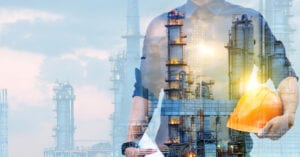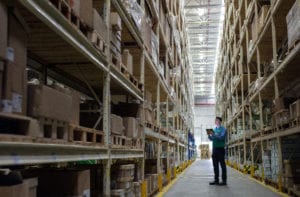Mining, Minerals, and Metals industry operations continue to become more autonomous and automated. Business-as-usual involves a long chain of operations and processes in various locations and facilities – from mine sites to maintenance workshops and processing plants to ports (outward and inward bound), warehousing, and laboratory facilities. Companies increasingly control some of these processes remotely in an Integrated Operating Center (IOC), bringing together and unifying what was sometimes a disparate and siloed approach to the value chain.
As adoption of the IOC becomes more and more widespread, there is an increasingly critical need to evaluate an often-overlooked operational aspect – the building infrastructure that houses the facility. To ensure peak performance of both operations and employees managing them, these buildings must be designed and managed appropriately.
Critical IOC attributes
The Integrated Operating Center is a critical facility where a team of closely interacting people carries out planning, control, and analytical functions. It could be thought of as an analogy of an air traffic control center or a financial trading hub. In many ways, it is also a symbol of the mining and metals companies’ commitment to new ways of working, sustainability, and digital transformation. The building infrastructure for the facility then has the following key goals:
- People-centric, so they are responsive to the people who work there.
- Sustainable, with flexible energy assets and energy efficiency controls.
- Resilient so operations can recover quickly after an interruption.
- Hyper-efficient, which requires them to be seamlessly controlled by an end-to-end digital platform.
Digital and sustainable systems
Some of the systems we need to think about to meet the goals above are well known. For example, Air Conditioning and Mechanical Ventilation are key to energy efficiency and comfort. However, new requirements evident in the last few years mandate that Indoor Air Quality needs to be monitored and controlled just as closely as temperature and humidity.
Security and Visitor Management Systems are present in most critical facilities. Still, as we have noted the digital nature of the IOC operations, we also need to consider Building Cybersecurity as such a facility might become the focus of deliberate threats.
Space Management Systems enable an increasingly flexible working environment, and Power Management Systems ensure Reliability and Availability.
The relevant digital building portfolio extends further into systems like Fire Systems and critical Data Centers.
Measurable outcomes
Two examples of sustainable buildings illustrate the benefits available to companies with buildings designed to be responsive to people, seamlessly controlled by an end-to-end digital platform, and resilient and sustainable.
Sodexo is a global integrated services company that provides a comprehensive range of soft and hard Facility Management services.
Using Schneider Electric’s Building Management System, EcoStruxure Power Monitoring Expert, EcoStruxure Workplace Advisor, and EcoStruxure Building Advisor, the Sodexo APAC House in Singapore is a 10,000-square-foot workspace that creates a “live” showroom for the company’s integrated Facility Management Services. The solutions also monitor occupants’ well-being, operational efficiency, and energy sustainability.
So far, Sodexo has realized an average 20% decrease in energy consumption. Following this trend, Sodexo executives expect to achieve capital expenditure payback within 4 years.
In France, the Microsoft Campus has approximately 2,000 employees and receives about 100,000 visitors each year.
The campus uses Schneider Electric’s EcoStruxure Workplace Advisor, ceiling presence sensors, and desk sensors under desktops to optimize the workplace by allowing employees to easily book meeting rooms, monitor the occupancy at the corporate restaurant, search for a printer or defibrillator, and even report technical incidents.
“As part of this project, the teams at Microsoft and Schneider Electric harnessed the best of their technologies, while putting the needs of users at the heart of the solution,” says Patrice Trousset, Director of Information Systems at Microsoft France. “Customers are interested to see that by better understanding how spaces and meeting rooms are used, we can optimize space occupancy and put in place good practices.”
Next steps
We would appreciate your feedback on your building goals within the Mining, Minerals, and Metals industries. Please participate in the Schneider Electric survey on this topic.



